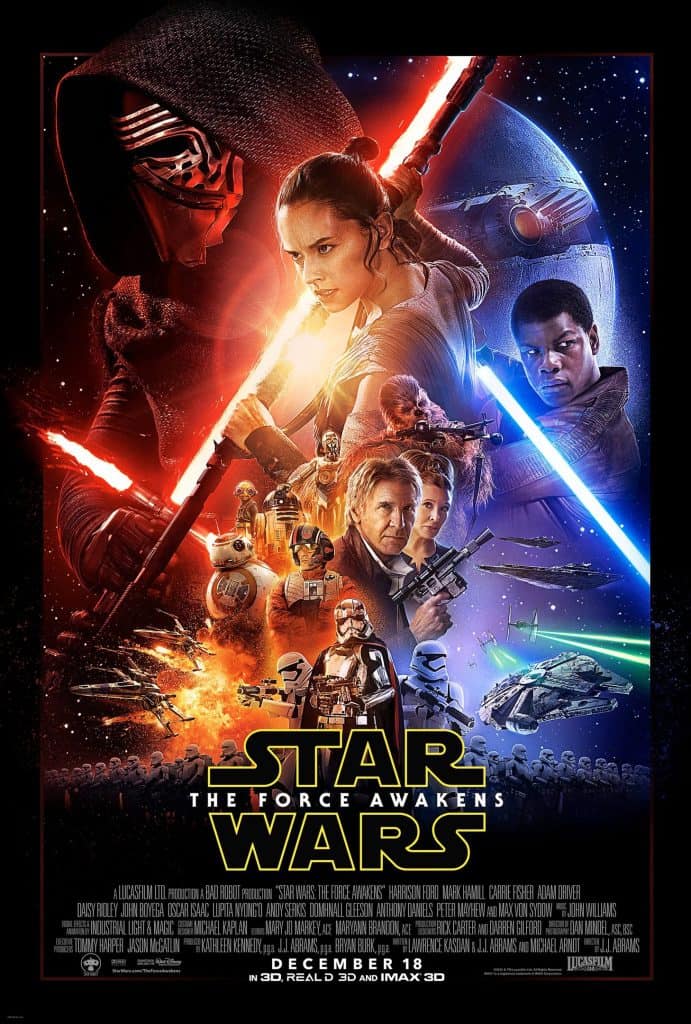Star Wars has the geek world in the palm of its hand.
It has for some time. The 2012 announcement of a new installment and a release date in the not-too-distant future was enough to immediately ignite endless discussions and speculation.
Because of this, it’s easy to miss the genius of Disney’s handling of this property over the past three years. The whole thing could have been a major misstep given the fact that it began the moment they took the franchise away from its creator George Lucas. On the contrary. It is clear now, days away from the premiere of The Force Awakens (the very first Star Wars movie made without Lucas) people want Star Wars to exist in a galaxy far, far away from the man who started it.
How did this happen?
The answer is that this success is the result of solid, methodical marketing practices. Three key points in particular stand out, and anyone looking to emulate Disney’s success should keep these factors in mind:
1. Timing & Placement is Everything
The release of The Force Awakens is only days away and it can feel like we are constantly bombarded with new pieces of content from the movie, but up until the past few months this was not really the case. In fact, the case could be made that what has been withheld from the fans has generated more hype than what was showcased.
When the official poster for the film was unveiled, the most prominent and iconic character from the series was completely absent. Naturally, the internet made mention of Luke Skywalker’s absence (despite the fact that actor Mark Hamill was cast in the movie and has extensively promoted it), and the discussion has not let up since.
These omissions of content are no accident. Disney’s Chief Executive Robert Iger has kept much of the company’s strategy under wraps, but he did provide a glimpse into his methodology. “We want to be careful that the demand does not create too much in the marketplace too soon,” explaining that every piece of marketing content is deliberately placed and meticulously planned in advance.
Here is an example. When a set of the movie’s action figures were unveiled, controversy erupted as the set featured only male characters. The set excluded Rey, the female protagonist of the film and perhaps the most prominent figure in the rest of the marketing campaign. To simply not capitalize on Rey action figures would be a strange misstep for Disney to make, given the focus of their marketing efforts.
As it turns out, Rey’s exclusion was very much intentional. Promotion of the Rey action figure was suppressed by law in order to protect details regarding the movie’s plot. The dissemination of this information (and the negativity directed towards Disney for issuing DMCA notices towards fans who revealed the action figure online) may not have been part of the master plan, but it did usher in a new wave of publicity for the movie, which is riding high on word-of-mouth buzz.
2. Don’t Divide Your Target Audience
Prior to acquiring Star Wars, Disney jumpstarted the Marvel Cinematic Universe and achieved massive success at the box office with The Avengers films. The most recent installment was released in May 2015, so naturally with the follow-up Captain America set for release a year later, one might assume the promotion for that movie would be starting imminently. After all, promotion for The Force Awakens began over a year prior to its release.
However, we received radio silence regarding all things Captain America until a trailer was released in November, just six months before that film’s release date. What gives?
The answer may be that Disney does not want to give their audience a choice in how they spend their money. According to Marketing Tech Blog, 41% of consumers feel overwhelmed by the amount of choice they are given on the internet, which can prevent them from making a purchasing decision. By releasing new marketing assets as sequentially as possible, Disney can better hold attention spans by keeping audience members excited about one franchise at a time. Both Marvel and Star Wars attract large and diverse audiences, but have similar sci-fi & fantasy roots. Disney risks compromising their audience’s attention to Star Wars by emphasizing Marvel simultaneously, and Disney seems to have made a concerted effort to avoid doing this.
3. Product Marketing: Give Customers What They Want
As it turns out, fans want Star Wars to be nothing like the recent prequels and everything like the original trilogy. With each new snippet of content from episode VII that is released, it appears to resemble 1977’s A New Hope more and more. Despite Mark Hamill’s claims that the movie has a different focus, he has also has acknowledged to a certain degree that “nothing’s changed” since those classic films.
In a behind-the-scenes promo for the film, he cites the use of physical sets, practical effects, and having “one foot in the pre-digital world.” The promo received a thunderous reception when it was unveiled at the 2015 San Diego Comic-Con, which is all the more impressive considering the fact that no new footage from the movie was shown.
In this case, fans didn’t want to be given the movie’s plot six months prior to seeing it. Disney recognized the impression they could make on their audience, and determined what state they should leave their audience.
Conclusion
Not everything is as ubiquitous as Star Wars and one could argue that any movie related with the franchise would be financially successful. But the hype for The Force Awakens is massive, and it’s not primarily a result of ad spend. Disney has methodically executed their strategy by holding to very basic principles:
- Spacing out content appropriately
- Keeping your target audience focused
- Giving people what they want, beyond the obvious
And when the movie destroys the box office this weekend, we will bear witness to the payoff of Disney sticking to their principles.
Have you been following The Force Awakens marketing campaign? Do you agree with our analysis? Don’t be shy, leave a comment and let us know!










